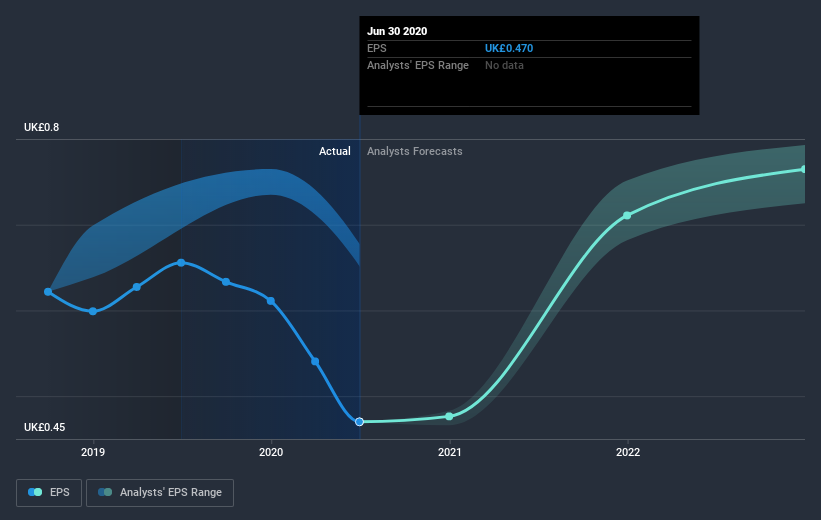The Hill & Smith Holdings (LON:HILS) Share Price Is Up 76% And Shareholders Are Holding On

Stock pickers are generally looking for stocks that will outperform the broader market. And while active stock picking involves risks (and requires diversification) it can also provide excess returns. To wit, the Hill & Smith Holdings share price has climbed 76% in five years, easily topping the market decline of 9.7% (ignoring dividends).
View our latest analysis for Hill & Smith Holdings
While markets are a powerful pricing mechanism, share prices reflect investor sentiment, not just underlying business performance. By comparing earnings per share (EPS) and share price changes over time, we can get a feel for how investor attitudes to a company have morphed over time.
Over half a decade, Hill & Smith Holdings managed to grow its earnings per share at 13% a year. This EPS growth is remarkably close to the 12% average annual increase in the share price. Therefore one could conclude that sentiment towards the shares hasn't morphed very much. Rather, the share price has approximately tracked EPS growth.
The image below shows how EPS has tracked over time (if you click on the image you can see greater detail).
Dive deeper into Hill & Smith Holdings' key metrics by checking this interactive graph of Hill & Smith Holdings's earnings, revenue and cash flow.
What About Dividends?
It is important to consider the total shareholder return, as well as the share price return, for any given stock. The TSR incorporates the value of any spin-offs or discounted capital raisings, along with any dividends, based on the assumption that the dividends are reinvested. It's fair to say that the TSR gives a more complete picture for stocks that pay a dividend. As it happens, Hill & Smith Holdings' TSR for the last 5 years was 95%, which exceeds the share price return mentioned earlier. And there's no prize for guessing that the dividend payments largely explain the divergence!
A Different Perspective
While it's never nice to take a loss, Hill & Smith Holdings shareholders can take comfort that , including dividends,their trailing twelve month loss of 1.1% wasn't as bad as the market loss of around 12%. Of course, the long term returns are far more important and the good news is that over five years, the stock has returned 14% for each year. It could be that the business is just facing some short term problems, but shareholders should keep a close eye on the fundamentals. It's always interesting to track share price performance over the longer term. But to understand Hill & Smith Holdings better, we need to consider many other factors. For instance, we've identified 1 warning sign for Hill & Smith Holdings that you should be aware of.
If you would prefer to check out another company -- one with potentially superior financials -- then do not miss this free list of companies that have proven they can grow earnings.
Please note, the market returns quoted in this article reflect the market weighted average returns of stocks that currently trade on GB exchanges.
This article by Simply Wall St is general in nature. It does not constitute a recommendation to buy or sell any stock, and does not take account of your objectives, or your financial situation. We aim to bring you long-term focused analysis driven by fundamental data. Note that our analysis may not factor in the latest price-sensitive company announcements or qualitative material. Simply Wall St has no position in any stocks mentioned.
Have feedback on this article? Concerned about the content? Get in touch with us directly. Alternatively, email editorial-team@simplywallst.com.

